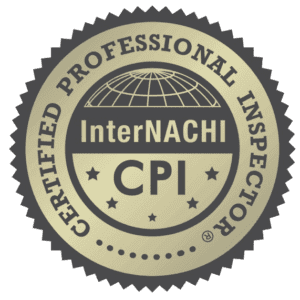In my very first blog article, I talked about GFCI breakers, which have become commonplace in pretty much all homes. A different type of circuit interrupter that many people have never heard about or had to deal with has recently started being installed in more homes since the turn of the century. This device is called an AFCI or an Arc Fault Circuit Interrupter. So what does this device do, and is it essential to have in your home? In this blog post, we will break down how this protection device works, starting with what an Arc Fault is.
What is an Arc Fault?
An Arc Fault is an unexpected discharge of electricity within a circuit. The cause behind an arc fault can be any damaged, corroded, or loosed terminals or wires. As circuit breakers can’t detect low-voltage, overtime heat is generated at the point of the arc, which, as a result, breaks down the wiring insulation and ignites any flammable material present in the surrounding.
What is the purpose of AFCI?
Standard circuit breakers are unable to detect harmful arcing currents. An AFCI is designed to detect wide-ranging arc faults, which helps to reduce the chances of an electrical system of becoming a flammable source. AFCI protects single-phase, 120 volts, 20, and 15-amp branch circuits that supply the electricity in dwelling units such as bedroom, bathroom, kitchen, etc. AFCIs were developed in response to all the identified problems, which can cause fires in a home, as reported by the Consumer Product Safety Commission and many other organizations.
How does an AFCI work?
AFCI breakers or outlets use electronic technology, which monitors the circuit and detects the presence of arcing conditions. It uses detection circuitry to differentiate between unwanted and normal arcing conditions. When an unwanted arc fault is found, internal contacts are tripped by the AFCI’s control circuitry and, as a result, reduces the potential of the occurrence of a fire. It serves as a dual-purpose circuit breaker- it not only shuts off the electricity when an arcing fault event occurs but also trips whenever a short circuit or an overload is detected.
AFCIs protect against three types of arcing faults, as mentioned below:
- Damaged conductor or lose connection, series fault
- Short in wire circuit, line to line neutral faults
- The line to ground faults such as frayed lamp cord
When did it start being mandated by specific codes?
The National Electrical Code is reviewed by almost 5000 volunteer members of the committee, having a wide range of expertise in electrical systems. AFCIs made their first appearance in National Electrical Code in 1999. In the 1980s and 1990s, various studies were led by the National Fire Protection Association, which led to the inclusion of AFCIs in the National Electrical Code. The 2020 NEC states that AFCIs shall be installed in a readily accessible location. The NEC 2014 required a ground fault protection for personnel in dwelling units for all 15, and 20-ampere receptacles, 120 volts, single-phase installed in the locations such as bathrooms, garages, kitchens, crawl spaces, living rooms, boathouses, etc.
Is it an issue if your home doesn’t have any?
Introducing AFCIs in your house is considered a safety upgrade. While many new homes have AFCI breakers, many older homes do not, and that is deemed to be acceptable since they were not required during the code year the house was built. Additionally, while many National Codes suggest they be required, local building codes may not require them (for instance, they are no longer needed in Chicago). The reason some municipalities have removed them from their current building codes is that AFCI breakers have been known to be overly sensitive and trip when there is not an arc-fault. While your city may not require them, AFCI’s may still be a worthy investment. If you are the type of person who buys a security system for your home, then you may wish to invest in installing AFCI’s to make sure your electrical system is extra secure as well.

